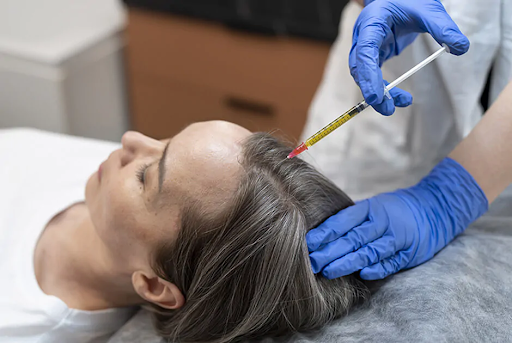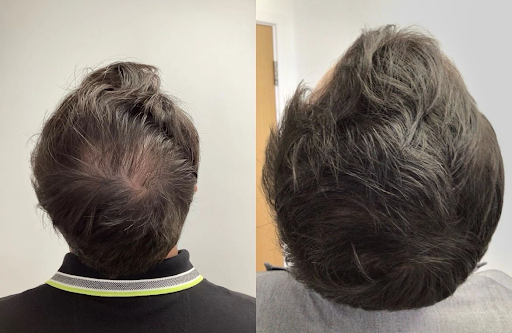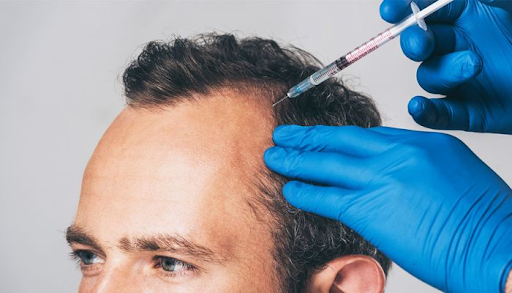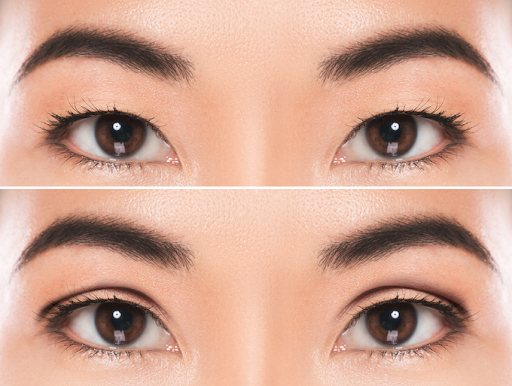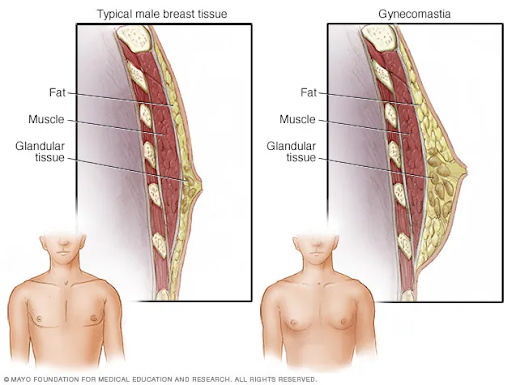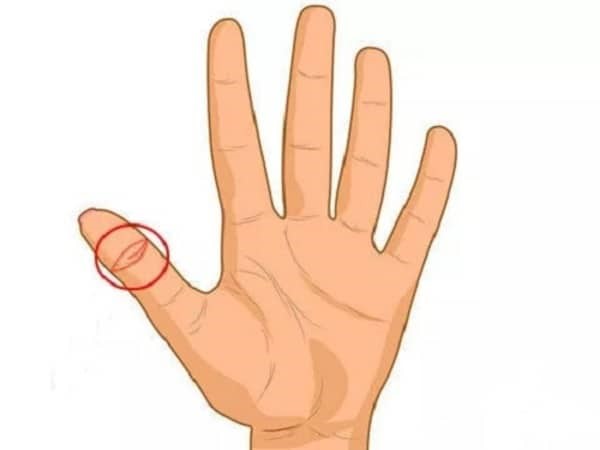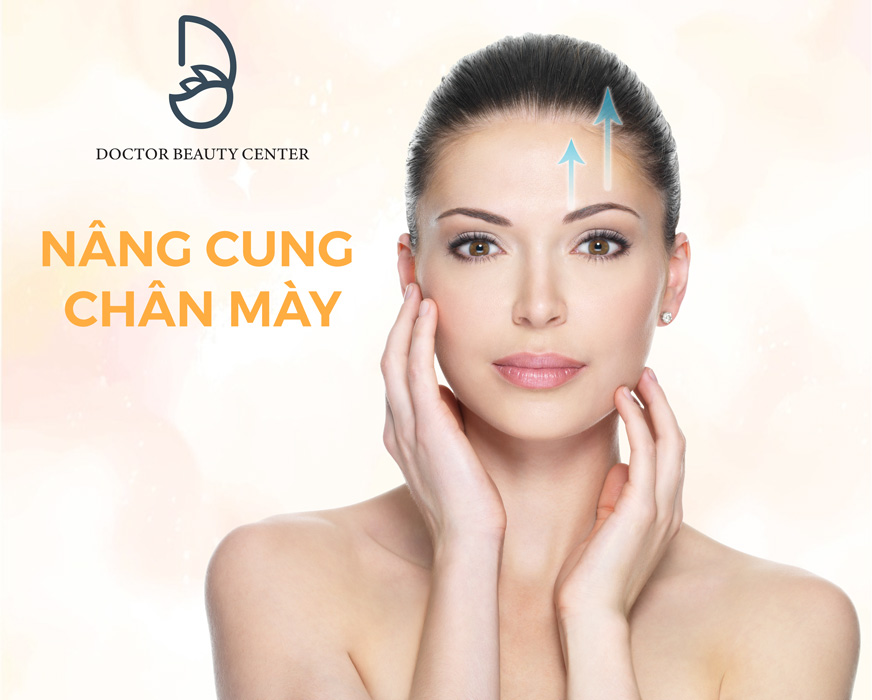Hair loss is a common condition that affects millions of men and women worldwide. It can occur gradually or suddenly, and its causes vary from genetic predisposition, hormonal changes, nutritional deficiencies, stress, to certain medical conditions or treatments. Many people seek solutions that are safe, effective, and minimally invasive and in recent years, Platelet-Rich Plasma (PRP) therapy has emerged as a promising option.
Beyond its physical effects, hair loss often carries a significant emotional toll, affecting self-esteem, confidence, and overall quality of life.
What is PRP therapy?
Platelet-Rich Plasma therapy is a regenerative medical treatment that uses the patient’s own blood to stimulate healing and tissue regeneration. PRP is derived by drawing a small amount of blood, which is then placed in a centrifuge to separate the plasma rich in platelets from other blood components.
This concentrated plasma contains growth factors that can promote cell repair, increase blood supply to tissues, and stimulate the activity of hair follicles. When injected into areas of thinning hair, PRP can encourage dormant follicles to re-enter the growth phase, resulting in thicker, healthier hair.
How PRP helps in hair restoration
The science behind PRP for hair loss lies in the natural healing properties of platelets. Platelets contain proteins and growth factors that play a crucial role in tissue repair. In hair restoration, these growth factors work by increasing blood flow to the scalp and hair follicles and stimulating the production of collagen and elastin in the scalp. Moreover, it can encourage inactive or newly implanted follicles to grow.
Because PRP is created from the patient’s own blood, there is virtually no risk of allergic reactions or disease transmission, making it a safe and natural solution for many types of hair loss.
The success of PRP therapy depends greatly on the expertise of the provider.
Who can benefit from PRP hair treatment?
While PRP can help a broad range of individuals, it is most effective when the hair loss is in its early to moderate stages. Patients with long-standing baldness or completely inactive follicles may require additional treatments, such as hair transplantation, for optimal results.
PRP therapy can be an effective solution for various hair loss conditions, making it a versatile choice for both men and women. It is particularly beneficial for those with androgenetic alopecia, commonly known as male or female pattern baldness, where genetics play a major role in thinning hair. Many patients also seek PRP to address hair loss caused by aging or hormonal fluctuations, such as those experienced during menopause.
New mothers dealing with postpartum hair shedding can also benefit from PRP’s regenerative properties, as can individuals who have noticed increased hair fall due to chronic stress. The treatment tends to deliver the best results in the early stages of hair loss, when follicles are still active but weakened, helping to prevent further thinning and encourage healthier regrowth.
The PRP procedure: Step-by-Step
PRP therapy for hair restoration is a minimally invasive, outpatient procedure that typically takes about 60–90 minutes. The process involves several steps:
Step 1 – Blood Collection : A small sample of blood is drawn from the patient’s arm.
Step 2 – Centrifugation: The blood is spun in a centrifuge to separate platelet-rich plasma from red and white blood cells.
Step 3 – Preparation of the PRP: The concentrated platelet-rich plasma is extracted and prepared for injection.
Step 3 – Scalp Injection: Using a fine needle, PRP is carefully injected into targeted areas of the scalp, focusing on regions with thinning hair.
Many patients describe the sensation as mild pinching or pressure, and local anesthetic can be used for additional comfort.
After the session, patients can typically return to normal activities immediately, with minimal downtime.
How many sessions are needed?
The number of PRP sessions varies depending on the severity of hair loss and the patient’s individual response to treatment. Most specialists recommend an initial series of three to four sessions spaced about four to six weeks apart. After this initial phase, maintenance treatments every six to twelve months can help sustain results. Patients often notice visible improvements in hair thickness and texture within three to six months after starting treatment.
What results can you expect?
PRP therapy does not produce overnight miracles, but with consistency, it can lead to significant improvements. Patients typically experience reduced hair shedding within the first few weeks, gradual thickening of existing hair, improved hair texture and shine and increased density in thinning areas.
The results are most noticeable when PRP is combined with a healthy hair care routine, proper nutrition, and, if needed, other medical treatments recommended by a hair restoration specialist.
Safety and side effects of PRP
One of PRP’s greatest advantages is its safety profile. Since the treatment uses the patient’s own blood, the risk of adverse reactions is extremely low. Mild side effects may include redness, swelling, or tenderness at the injection site, which typically resolve within a day or two. Serious complications are rare when the procedure is performed by a qualified professional in a sterile clinical setting.
Comparing PRP to other hair loss treatments
While there are many hair restoration options available, PRP stands out for its unique advantages. Unlike hair transplant surgery, PRP is entirely non-surgical, meaning there are no incisions, stitches, or lengthy recovery periods.
Because the treatment uses your own blood, it is completely natural and autologous, eliminating the need for synthetic substances and minimizing the risk of allergic reactions. Recovery is quick, with most patients able to return to their daily routines immediately after the procedure.
Furthermore, PRP is highly versatile, it can be performed as a standalone therapy or combined with other treatments such as microneedling, laser therapy, or even hair transplantation to maximize and prolong results. However, it’s important to note that PRP is not a cure for all types of hair loss.
A professional consultation is essential to determine whether it is the right solution for your specific condition.
Choose a Professional Clinic for PRP Hair Treatment – Dr. Havard
The success of PRP therapy depends greatly on the expertise of the provider. Factors such as the concentration of platelets, injection technique, and treatment schedule can significantly influence outcomes. Choosing a clinic with experienced professionals, advanced equipment, and a strong track record in hair restoration ensures that you receive the safest and most effective care possible.
At Dr. Havard’s clinic, we understand the emotional and physical impact of hair loss, and we are committed to providing advanced, science-backed solutions tailored to each patient’s needs. Our PRP hair restoration treatments are performed by highly trained specialists using state-of-the-art centrifuge technology to ensure optimal platelet concentration and maximum results.
From the moment you walk into our clinic, you will experience a warm, supportive environment where your comfort and satisfaction come first. We take the time to conduct a thorough scalp assessment, discuss your concerns, and design a personalized treatment plan that aligns with your goals.
Our mission is to help you regain not just your hair, but also your confidence. With Dr. Havard, you can rest assured that you are receiving the highest standard of care, backed by years of expertise in aesthetic and regenerative medicine.
If you are ready to take the next step towards healthier, fuller hair, contact us today to schedule your consultation and discover how PRP therapy can transform your look and your life.

